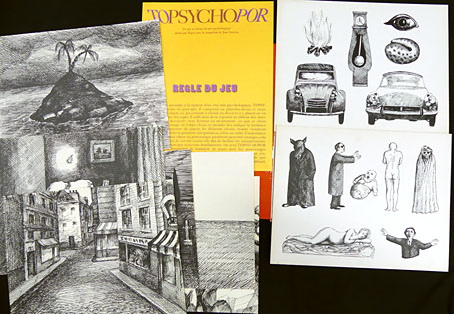
Published in Paris in 1964, “a game in the form of a psychological test produced by Topor with the help of Jean Suyeux”. A red box measuring 41 x 32 cm, containing 6 “decor boards” or stages which depict a street, a region of rocks, a cemetery, a bedroom, a plain and an island; plus two sheets of pre-cut characters: a fire, a clock, an eye, a shell, two Citroën autmobiles (a 2CV and a DS), a wolfman, a blind man, a baby, a naked man, Death, a sleeping woman, and a truncated man.
“Sans prétendre atteindre à la rigueur d’un vrai test psychologique, TOPSYCHOPOR en utilise les principes. Il comprend six planches-décors et treize personnages ou objets. Le jeu consiste à choisir un décor et à y placer un ou plusieurs éléments découpés. ll suffit alors de se reporter au tableau des interprétations pour découvrir—avec horreur ou ravissement—ce que ce choix signifie. Le personnage ou l’objet choisi en premier lieu indique la tendance dominante du caractère du joueur, les éléments choisis ensuite viendront nuancer et compléter la première interprétation, selon un ordre d’importance décroissant. Certains objets ou personnages paraîtront peut-êtrc étranges; cela ne doit pas étonner, ils ont été voulus tels afin de faciliter les interprétations. Vous verrez d’ailleurs que vous vous familiariserez vite avec TOPSYCHOPOR et bientôt vous ressentirez la tentation de jouer avec lcs personnages sans plus vous soucier de leur signification. Car ce jeu cache son jeu, un jeu auquel vous vous prendrez. Pour l’interprétation des récits que vous ferez alors, vous pourrez toujours consulter votre psychiatre habituel.”
Rules of the game (autotranslated): “Without claiming to achieve the rigor of a real psychological test, TOPSYCHOPOR uses its principles. It includes six decor boards and thirteen characters or objects. The game consists of choosing a decor and placing one or more cut elements in it. It is then enough to refer to the table of interpretations to discover—with horror or delight—what this choice means. The character or object chosen in the first place indicates the dominant tendency of the player’s character, the elements then chosen will come to qualify and complete the first interpretation, in order of decreasing importance. Some objects or characters may appear strange; that should not surprise, they were wanted such in order to facilitate the interpretations. You will see that you will quickly become familiar with TOPSYCHOPOR and soon you will feel the temptation to play with the characters without worrying about their meaning. Because this game hides its game, a game that you will take. For the interpretation of the stories that you will then make, you can always consult your usual psychiatrist.”
I don’t have a copy of this, unfortunately (and please don’t tell me you have one to sell). Picture searches kept turning up links to film festivals which was a little confusing until I realised that there’s a short film by Antonin Peretjatko, Mandico et le TOpsychoPOR, about a man encountering the game.
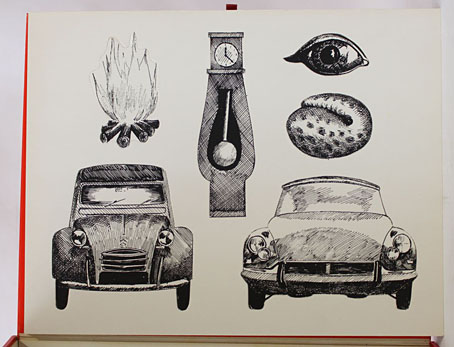
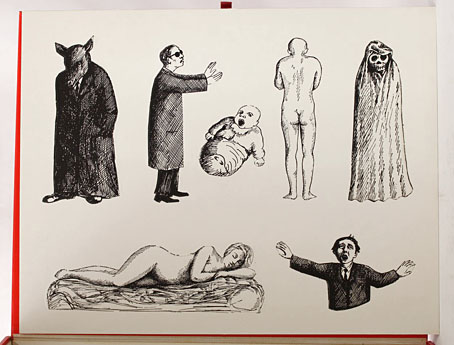
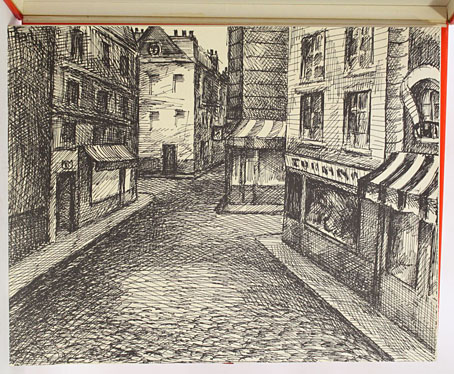
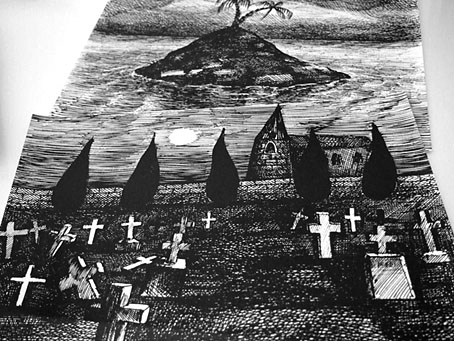
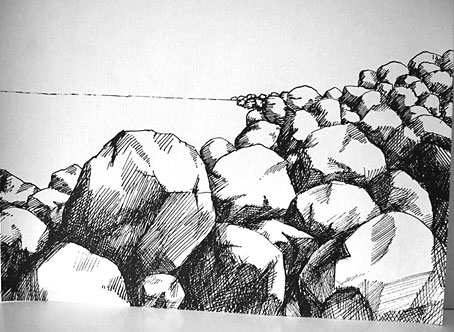
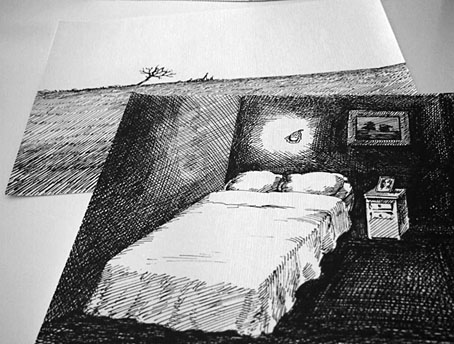
Previously on { feuilleton }
• L’Autoportrait d’un Pornographe
• Les Temps Morts by René Laloux

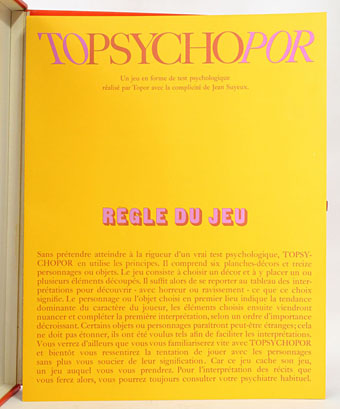
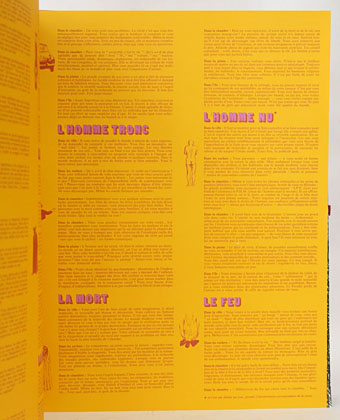
“[T]his game hides its game.” Words to live by, indeed.
Fascinating. I wonder if Gorey was aware of Suyeux and this game. The art is very reminiscent of his own work in ways.
Hi Jay. Roland Topor was the artist here. Gorey was ten years older than Topor, and his drawing style was already fully-formed by 1964 so I can’t see there being any influence. Topor was a very familiar figure in France as a writer as well as an artist but his work is less familiar outside Europe. In Anglophone countries he’s mainly known for having written the novel that Roman Polanski filmed as The Tenant, and appearing as Renfield in Werner Herzog’s Nosferatu. Gorey and Topor did share a taste for black humour, however, so I imagine Edward would have appreciated the game.
I have a totally unused copy of this game passed down from my great uncle who was a journalist in Paris, I can not believe I just decided to google it today and this article today. Thanks for the info. Do you have any idea how common these are?
Hi Christophe. They seem to be quite rare to judge by the prices that book dealers are asking (the cheapest one on Abe.com is currently $1,598), which is why I made a note about not wanting to buy one! I wouldn’t have thought that many of them were printed given the expense of producing such an item and its limited appeal. There was a German-language edition as well.
Thanks for getting back to me John. I’ve just been on a mad rabbit hole journey around the internet finding what little info there is about this game and the movie. Were you able to watch the movie? I cant find a link to it anywhere. I did just message the main guy who is in it, Bertrand Mandico, on instagram so we’ll see what he says.
Your article was the most information I could find on it to be honest. I’m still getting over the fact I’ve had this for probably 15yrs and only decide to google it today and you posted about it yesterday, what are the chances. I always did wonder what sort of person would put together this game and now I know! I will do a little more research on him later this week.
Yes, that is surprising. I only went looking for information about the game last week when I saw mention of it in René Passeron’s Encyclopedia of Surrealism. I’ve had that book for many years but hadn’t noticed the reference to Topor’s game before so was curious.
Topor is a fascinating character, very creative, a savage wit, and the creator of many memorable drawings. The Tenant is a very good novel as well, better than the film in some ways. I’ve not seen Peretjatko’s film but it only seems to run for 6 minutes so unless it turns up on YouTube or Vimeo I doubt it will be easy to see at all.
Many of Topor’s books have been republished recently by Wombat in France, and are well worth getting.
Hi John,
Thanks for responding. I was more observing the similarities in their aesthetics, since Gorey was the first image that came to mind when I saw Topor’s crosshatch work for the game. Topor clearly has his own gifted hand on illustration, which I dig.
That’s fascinating about Renfield. What a life!
You can find the game occasionally on eBay France. Typically sells anywhere between $50 and $150, sometimes more.